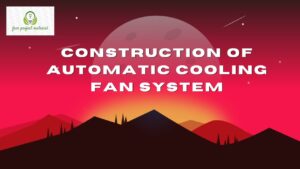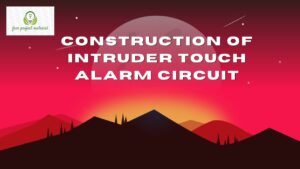ABSTRACT
This study was aimed at installation of solar lighting system in Physics Laboratory. It was carried out using standard methods. The solar controller type used in this study was Pulse width modulation (PWM). The device had an output current of 18A – 22A, voltage of 12V – 22V and load of 0 – 1.5 KVA. The solar system worked effectively and cost no further operational cost, when compared to a 1.5KVA petrol generator, it was costly but for the initial expenses. However, it was later seen to be cheap since the system need no petrol to operate, but sun light which is nature’s free gift (Hugh, 2006). Thus, the Government should recommend solar energy as a source of electricity since it is noiseless, it does not use fuel and it is environmentally friendly.
TABLE OF CONTENTS
Title Page – – – – – – – – – i
Certification – – – – – – – – – ii
Dedication – – – – – – – – – iii
Acknowledgment – – – – – – – – iv
Abstract – – – – – – – – – v
Table of Contents – – – – – – – – vi
CHAPTER ONE: INTRODUCTION
1.1 Background of the Study – – – – – – 1
1.2 Aim and Objectives of the Study – – – – – 3
1.3 Scope and Limitation of the Study – – – – – 4
1.4 Definition of Terms – – – – – – – 4
CHAPTER TWO: LITERATURE REVIEW
2.1 Concept of Photo electricity – – – – – – 5
2.2 Photoelectric Effect – – – – – – – 6
2.3 Photocell – – – – – – – – 10
2.3.1 Photo-Emissive Cell – – – – – – 10
2.3.2 Photo-Voltaic Cell – – – – – – – 13
2.3.3 Photo-Conductive Cell – – – – – – 14
2.4 Solar Lightening – – – – – – – 14
2.5 Solar Lighting System – – – – – – 15
2.6 Solar Charge Controller – – – – – – 19
2.7 Types of Solar Charge Controller – – – – – 20
2.8 Solar Inverter – – – – – – – – 24
CHAPTER THREE: MATERIALS AND METHODS
3.1 Materials – – – – – – – – 27
3.2 Methods – – – – – – – – – 27
CHAPTER FOUR: RESULTS AND DISCUSSION
4.1 Result – – – – – – – – – 29
4.2 Discussion – – – – – – – – 30
CHAPTER FIVE: CONCLUSION AND RECOMMENDATIONS
5.1 Conclusion – – – – – – – – 32
5.2 Recommendations – – – – – – – 32
References
1.0 CHAPTER ONE: INTRODUCTION
1.1 Background of the Study
Solar Energy, radiation produced by nuclear fusion reactions deep in the Sun’s core The Sun provides almost all the heat and light Earth receives and therefore sustains every living being. For a country concerned about environment problems, sustainable energy sources is becoming more of a consideration. Solar energy can be converted to electricity directed by Solar Home Systems. Flow of converted electricity from photovoltaic is determined by charge controller. An efficient charge controller can be used to do the battery charging and discharging process faster and better (Hugh, 2006).
Photovoltaic solar systems can be divided into two basic categories – grid connected and off-grid (also called stand alone or isolated) solar systems. The grid connected systems feed the electricity produced by solar panels to the grid using an inverter. When the electricity is needed during night or periods with little sunlight, the excess electricity is usually stored in batteries during the day and batteries are used to power the appliances in times when photovoltaic panels do not produce enough energy. Solar regulators (also known as charge controllers) play an important role in isolated solar systems (Korenciak et al., 2011). Their goal is to ensure the batteries are working optimally, mainly to prevent overcharging (by disconnecting solar panels, when batteries are full) and to prevent too deep discharge (by disconnecting the load when necessary) (Cook,1998). Battery lifetime reduces drastically due to overcharging and deep discharging. Battery is a very expensive component of a Solar Home System; hence it is necessary to protect batteries from being over charged or deeply discharged. In this regard, a charge controller plays a vital role to protect the battery (Ashiquzzaman et al., 2011).
One of the best ways to get power to remote, off-grid locations in Nigeria, is through Solar Home System (SHS). The system consists of photovoltaic panel, battery, and a solar charge controller. Solar energy is stored into batteries. A solar charge controller regulates the voltage and current that is coming from the solar panels and going to the battery (Neha, 2013). The charge controller is a switching device that controls the charging and discharging of the battery. This will protect the batteries from damage and hence prolong the lifespan of the battery (Kondracki et al., 2014).
Photovoltaic System consists of a Photovoltaic/Solar Panel (module), charge controller, batteries and power inverter. The Photovoltaic/Solar Panel (module) or array converts the sunlight energy into DC electrical energy. The charge controller conditions the DC electrical voltage and current produced by the Photovoltaic/Solar Panel (Module) or array to charge a battery. The battery stores the DC electrical energy so that it can be used when there is no solar energy available (night time, cloudy days etc.). DC loads can be powered directly from the Photovoltaic/Solar Panel (Module)/Battery. The inverter converts the DC power produced by the Photovoltaic/Solar Panel (Module), stored in the battery, into AC power to enable powering of AC loads (Hugh, 2006).
This work is centered on the installation of solar powered lightening system in the physic laboratory, Akwa Ibom State Polytechnic with an indept study of the solar controller which is part of the solar power lighting system
1.2 Aim and Objectives of the Study
1.2.1 Aim
The aim of this study is to install solar charge controller for solar lighting in the Physics Laboratory.
1.2.2 Objectives of the Study
The objective of this study are:
- To provide and maintain a constant light supply at the physics laboratory
- To supply electricity for powering of electrical/electronic appliances during practical classes.
1.3 Scope and Limitation of the Study
This study will only focused on the installation of a solar panel charge controller.
1.4 Definition of Terms
Solar charge controller: A solar charge controller is used to keep the battery from overcharging by regulating the voltage and current coming from the solar panel to the battery.
Inverter: It is a circuit for converting direct current DC to alternating current AC. In a simple inverter circuit, DC power is connected to a transformer through the center tap of the primary winding.
PV Panel: In a photovoltaic cell, light excites electrons to move from one layer to another through semi-conductive silicon materials. This produces an electric current.
Battery: Solar batteries produce electricity by a photoelectric conversion process.

